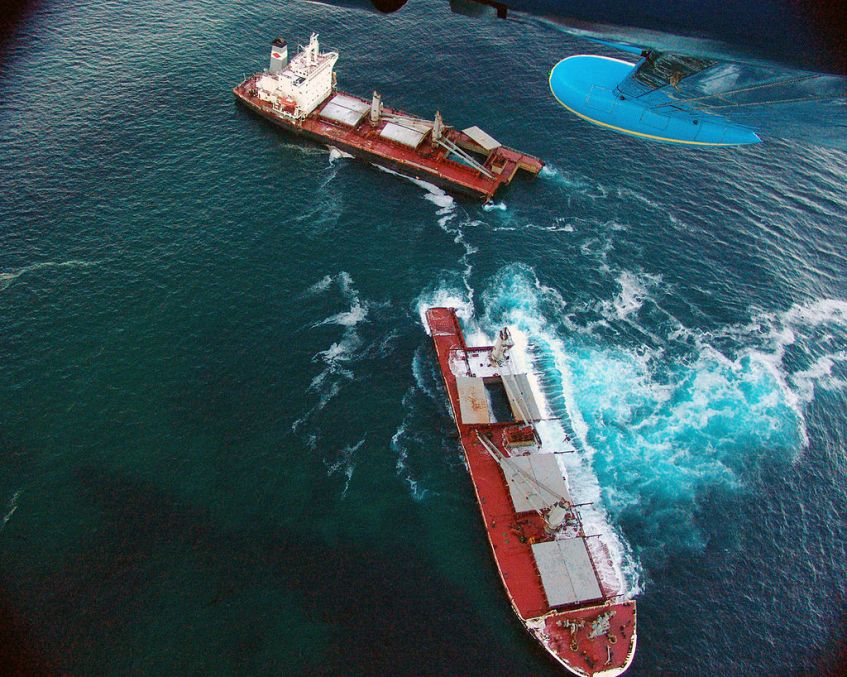Recent Posts
An Ode to the Humble Bulk Carrier
Blog Post by: Captain Karolina Cirjak
April 15, 2019

Bulk Carriers are the ‘workhorses’ of international trade that transport a huge range of cargoes around the world ranging from agricultural products (fertilisers, grains), raw materials for manufacturing (metal ores and minerals) through to waste products (scrap metal), plus much more.
Designed for flexibility and efficient loading and discharge, they are often considered as easy ships to handle and operate – an understandable view if one watches a bulk carrier being loaded through open hatches and cargo simply being poured in. However, this simplicity belies some undesirable truths about bulk carrier losses and casualties that have resulted in the avoidable loss of seafarer’s lives.
In this article, Captain Karolina Cirjak highlights some of the key issues in bulk carrier operations, which we will explore further in a series of upcoming articles.
Bulk Carrier Loading and Unloading
Seeing a Capesize bulk carrier loaded in 16 hours, one could be forgiven for being impressed at the apparent ease and efficiency of the operation. Dig a bit deeper however, and a different story emerges.
Loading at a rate of 10,000 tonnes an hour or more creates very high stresses on the ship’s structure and can cause significant damage if not well managed. At such high loading rates, the vessel must de-ballast at the same rate so as not to over-stress the ship. Loading becomes a very sensitive operation and if the vessel cannot de-ballast quick enough, this can result in catastrophic structural failures.
In some ports, vessels have been ‘black-listed’ for not having the ballast pump capacity to load in the port’s desired turnaround times. So, who holds the power in the port-vessel relationship?
Discharging is not much less aggressive either. The nature of the cargo required large, heavy grabs and bulldozers to unload. Impact damage due to grabs and bulldozers also create a continual need for maintenance to the vessel’s structure. For vessels which are placed under high stresses, this is a serious concern in the operation of bulk carriers.
Cargoes
The cargo itself can present a significant risk to the crew of the bulk carrier. Liquefaction of solid bulk cargoes continues to be a major problem – between 2012 and 2015, 101 seafarers were lost due to liquefaction of cargoes, causing their vessels to capsize and sink rapidly (https://www.intercargo.org/wp-content/uploads/2018/05/bulk-carrier-casualty-report-2017.pdf).
Similarly, fire in cargoes is an ongoing problem with cargoes that self-heat and ignite and can quickly develop into very serious incidents.
There are 183 types of cargoes listed in the International Maritime Solid Bulk Cargoes Code (IMSBC) that regulates bulk cargo transport, and many more in Appendix 4 of the Code. Particular problems for the crew to deal with are new cargoes simply not listed anywhere in the Code, cargoes given different names to disguise their real nature and previously defined cargoes types exhibiting different and potentially harmful properties.
It is unlikely that any Master and crew in the world have the knowledge and experience of all the cargoes that they may have to carry. So, what happens when the Master cannot find his next bulk cargo in the IMSBC Code?
There is a procedure to follow, but the bottom line is: he or she must trust: Trust the Shipper, the Charterers, the Owners, local surveyors and so on. It is likely that assurances will be given to the Master that it is just fine to load the cargo (as fast as possible too). There is considerable commercial pressure to load the cargo and to deal with any consequences later if needed.
in the coming series of articles, we will investigate some of these issues further and hopefully provide the reader with some insight into an often overlooked and under-appreciated sector of the shipping industry.
Below are a few images showing a Bulk Carrier being cleaned and loaded.





